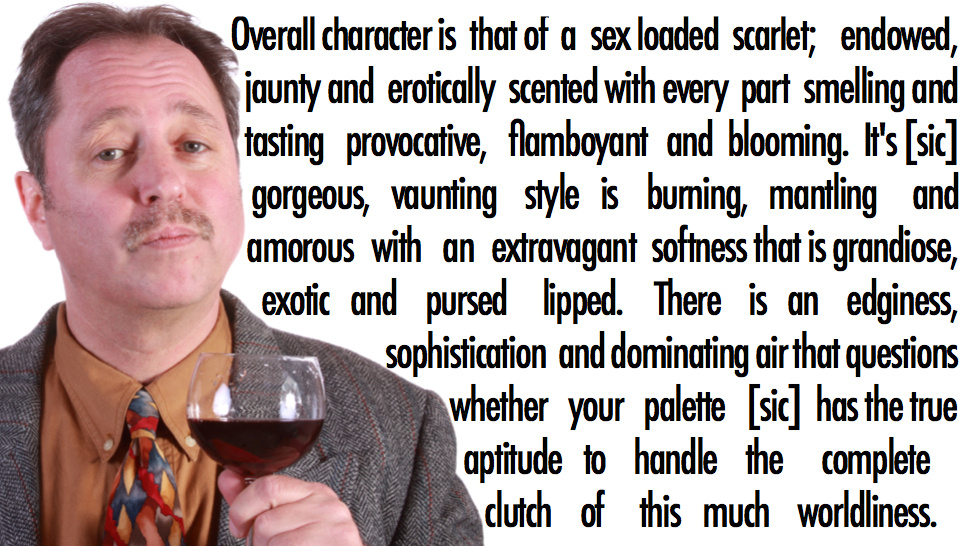There are lots of bullshit artists in the wine trade … and a lot of what is written about wine is definitely bullshit:

The human palate is arguably the weakest of the five traditional senses. This begs an important question regarding wine tasting: is it bullshit, or is it complete and utter bullshit?
There are no two ways about it: the bullshit is strong with wine. Wine tasting. Wine rating. Wine reviews. Wine descriptions. They’re all related. And they’re all egregious offenders, from a bullshit standpoint.
[. . .]
In 1996, research published in the Journal of Experimental Psychology concluded that wine experts cannot reliably identify more than three or four of a wine’s flavor components. Most wine critics routinely report tasting six or more. The wine review excerpted in the top image for this post, for example (which is a real review, by the way – somebody actually wrote those words about a bottle of wine, in earnest) lists the following components in the wine’s “principle flavor” profile: “red roses, lavender, geranium, dried hibiscus flowers, cranberry raisins, currant jelly, mango with skins [Ed. note: jesus wine-swilling christ – mango with skins?], red plums, cobbler, cinnamon, star anise, blackberry bramble, whole black peppercorn,” and more than a dozen other flavors that I refuse to continue listing lest my head implode.
Fun fact: MIT behavioral economist Coco Krume recently conducted a meta-analysis of the classifiers used in wine reviews, and found that reviewers tend to use “cheap” and “expensive” words differently. Cheap descriptors are used much more frequently, expensive ones more sparingly. Krume even demonstrated that it’s possible to guess the price range of a wine based on the words used in its review.
Even with all the evidence that the wine world is replete with marketing bullshit, there’s still great wine experiences to have, and you don’t need to wear an ascot and fake a snobby accent to enjoy it. As I wrote last year:
There are good wines and bad wines. There are good wines and better wines. But my experience has always been that there’s a point of diminishing returns beyond which you’re paying more money for no appreciable improvement in the quality of the wine. In other words, beyond that point, you’re paying for the prestige of the label or the mystique of the brand not for anything intrinsic to the liquid in the glass. [. . .] If you’re buying wine to have with a nice dinner, find your point of diminishing returns and don’t go beyond it: you’ll save yourself a lot of money over time and still enjoy your wine. If, on the other hand, you’re buying wine specifically to impress then go as expensive as you like.



